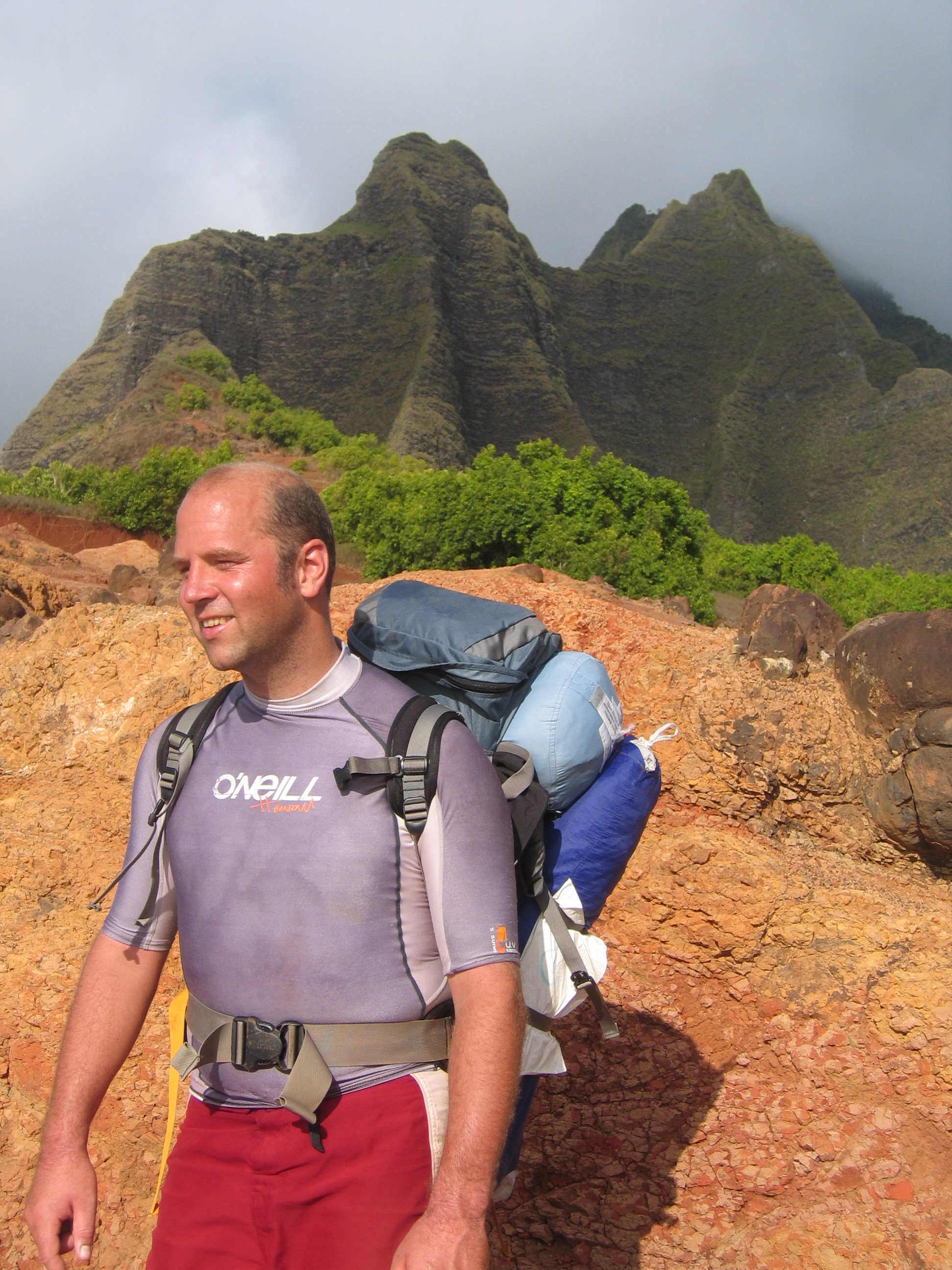
"Live, travel, adventure, bless and don't be sorry" (Jack Kerouac) -
Enamored with the Universe, while hiking the Kalalau Trail
on Kauai, Hawai'i
I'm a theoretical physicist working on neutrinos and
cosmology, a
professor at TU Dortmund University, and a book and Nature lover.
I also dabbled occasionally with science writing and philosophy.
Along the way, I tried to become an
inventor of
time machines, inspired several science fiction stories and helped to paint the
orangutan cage in the Honolulu zoo. I feel most happy near the ocean,
and I still have a surfboard in Hawai'i.
I was born and raised in beautiful
Bremen,
an old Hanse town
located in the lowlands of northern Germany
some thirty-five nautical miles inland from the mouth of the river Weser into the North Sea.
Already in my early days when I
learned some Latin and classical Greek at the
Altes Gymnasium Bremen, I became deeply fascinated about
ancient knowledge, modern science and the foundational questions both subjects entail.
Ever since, my curiousness and deep desire to
investigate the areas behind the horizon drove me to
travel the world.
After studying physics and some philosophy in Bremen and Heidelberg, I
started my career as a graduate student at the
Max-Planck-Institut für Kernphysik
in Heidelberg, working on an extremely rare nuclear process:
the simultaneous occurrence of two radioactive beta decays within a
single nucleus, known as
double beta decay.
While this phenomenon happens occasionally, albeit with a half life larger than
what's usually quoted as the age of the Universe, there may be a more interesting
(and even more rare) version of the decay that doesn't emit any neutrinos,
and would require the neutrino to have a mass and be its own anti-particle.
Heroic experimental efforts during the 1990ies that culminated in
the 2015 Nobel prize confirmed that neutrinos indeed are massive.
Since this possibility wasn't intended in the Standard Model of Particle
Physics, it is generally considered as an indication for new Physics Beyond
the Standard Model, and one of the hottest topics in science.
Neutrinos being their own anti-particles,
for example, may be related to the question why there is more matter
than anti-matter in the universe. They also may be a consequence of a yet
to be discovered theory of quantum gravity. Neutrinos and
neutrinoless double
beta decay thus provided me with a perfect lever to explore various ideas of
new physics and their experimental consequences, all the way up to
Grand Unification, early universe cosmology, extra dimensions of spacetime,
and even the possibility of time travel.
In 1999 I was awarded a PhD from the
"Ruperto Carola"
University of Heidelberg (established 1386).
After a brief stint at the
University of Valencia in Spain,
I had postdoc positions at
Vanderbilt University in Nashville TN and the
University
of Würzburg, followed by
two years of an almost endless summer in
paradise: at the
University of Hawaii
in Honolulu, HI. In 2005
I was awarded the Habilitation from the
"Julia Maximiliana"
University
of Würzburg (established 1402). Over the course of my career, I
authored more than 80 publications in refereed journals, with more than 5000
citations. My research was
featured four times on the cover of the
New Scientist magazine, and an article I wrote
with Martin Hirsch and
Werner Porod about
how
neutrino experiments light the way to new physics
became a Scientific American cover feature
(both in the US and its Taiwanese, Polish,
Brazilian, Spanish, Russian, French and Japanese international editions).
It also got reprinted in the collector's edition "Ultimate Physics: From
Quarks to the Cosmos", next to a piece by
Stephen Hawking.
I was a visiting scientist, among other places,
at the
Gran Sasso Laboratory in Assergi/Italy,
the
ICTP Trieste,
CERN Theory Division,
Fermilab Theory Group, the
Aspen Center of Physics and
the KITP in Santa Barbara
and presented my research in conference talks, seminars and colloquia
all over Europe and the US, as well as
in Russia, Chile, Japan, China, Vietnam, Singapore, Israel and India.
I also was one of the initiators of the
"Beyond the Desert"
conference series on particle physics beyond the standard
model, and from 2017-2019, I
served on the Editorial Board of the research journal
Physical Review D.
While living in Hawaii, on a small island in the midst of the vast Pacific ocean with
its culture coined by the belief in
"lokahi",
the harmony and unity of diverse elements, my
perspective on the Universe changed, and I grasped more clearly how Nature works as
a "net-like intricate fabric" (in the words of the great German explorer and naturalist
Alexander von Humboldt).
Around the same time, through intensive discussions with quantum pioneer
H. Dieter Zeh, I realized how
quantum entanglement
unifies the cosmos into a single quantum reality. These insights gradually
converted me to the philosophy of
monism.
In the fall of 2006, I left Hawaii
- so long,
sex wax 5x! - to become a respectable faculty member, first at the
University of Alabama in Tuscaloosa, AL,
and soon after at
TU Dortmund University. Living with my wife Sara and our sons Hemmi and
Theo close again to my place of birth, I'm
still in search of the perfect wave and the next hint towards the
ultimate theory of Nature ...
I believe in science as the best guideline for decision making, so
in politics I'm supporting the small German party
Partei der Humanisten, that is
advocating a progressive liberal, secular and decidedly pro-science agenda.
In my books I try to convey what fascinates and drives me: the amazing
potential of
tiny neutrinos to demystify the universe in "The Perfect Wave"
(Harvard University Press, 2014), and the enchanting interplay between
diversity and unity in Nature,
culminating in the
mind-boggling idea that, at the most fundamental level, there might be only a
single thing in the universe, the universe itself, and that we ourselves,
space, time, and matter are nothing but illusions, in "The One"
(Basic Books, January 2023).